
views
X
Trustworthy Source
MedlinePlus
Collection of medical information sourced from the US National Library of Medicine
Go to source
Although this is a common procedure, it's possible for the cut to get infected. Research suggests pain, smelly discharge, redness, and swelling around the area may be signs of an infection, so see your doctor if you notice these symptoms.[2]
X
Trustworthy Source
National Health Service (UK)
Public healthcare system of the UK
Go to source
Fortunately, it's fairly easy to care for your episiotomy at home.
Dealing with Pain

Ask your physician about painkillers that you may be able to use. Many medications are not safe for nursing mothers to use because they may pass through your breastmilk to the baby. Talk to your doctor about safe medication options to help you manage your pain after an episiotomy. Paracetamol is often prescribed for breastfeeding mothers who require pain medication after an episiotomy.
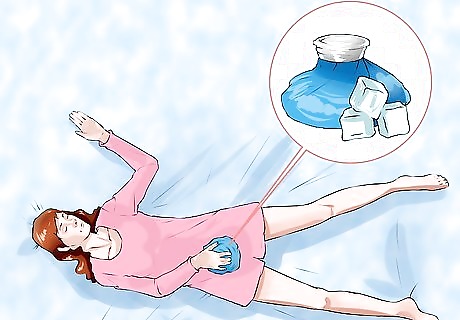
Place an ice pack on the perineum when you are resting. The perineum is the area between the vagina and anus where the episiotomy was made. You can use an ice pack to help reduce swelling and ease the pain. Wrap an ice pack in a towel and place it between your legs while you are lying in bed or reclining in a chair. Make sure that you do not leave the ice pack on for more than 15 minutes at a time. Take it off now and then to prevent your skin from getting too cold.
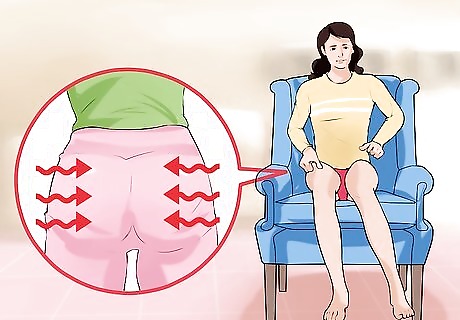
Tighten your buttocks as you sit down. Tightening your buttocks as you sit down will help to pull the tissue together in the perineum, which will help to prevent it from stretching and pulling at your stitches. You may also find that sitting on a pillow or inflated ring will reduce the pressure and pain in your perineum.

Talk to your doctor about sitz baths. Depending on your situation, your doctor may recommend that you take a daily sitz bath. Sitz baths can help to reduce the pain, swelling, and bruising around the wound area. Fill a bathtub with warm or cool water. Warm water increases the circulation and may feel good, but cool water can decrease the pain a bit faster. Sit in the bath for up to 20 minutes.
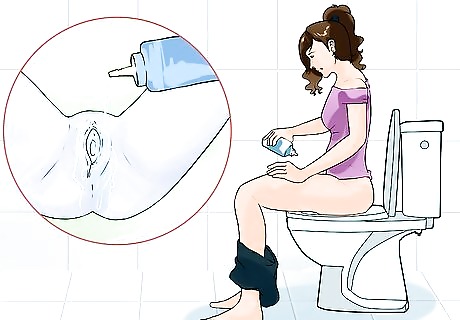
Pour water over your stitches while you urinate. Urination can cause stinging and pain in your wound area. Any urine that runs over your wound may also introduce bacteria into your wound. To reduce discomfort and keep your stitches clean, pour water over the area using a squeeze bottle or water bottle as you are urinating. After you have finished going to the bathroom, squeeze a little more water over the area to clean it off.
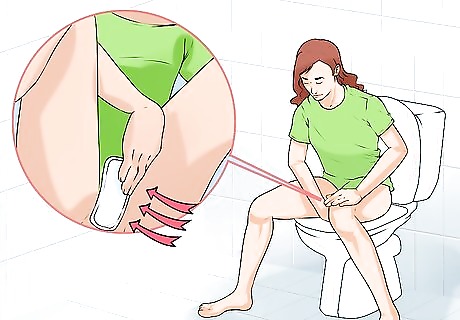
Put pressure on your wound during bowel movements. Bowel movements can be a challenge after an episiotomy. To provide support during a bowel movement, press a fresh pad against your perineum and hold it there while you go. Doing so should help to reduce your pain and discomfort. Make sure that you discard the pad after you have finished and use a new one every time you have to go.

Reduce your risk of becoming constipated. Constipation will increase the pressure against the perineum during a bowel movement. This increased pressure will lead to increased discomfort and stretching of the incision line. To reduce your chances of becoming constipated, make sure that you drink plenty of water, eat fiber rich foods, and get some mild exercise during the day. Drink at least eight 8-ounce glasses of water a day if you are bottle feeding and a few extra if you are breastfeeding. Try not to get compulsive about drinking water because over hydrating can cut your milk supply. Just don’t allow yourself to be thirsty during the day. Eat foods that are fiber rich. Fiber rich foods will help loosen your stool and make it easier to have a bowel movement. Fruits and vegetables are good sources of fiber. Get some mild exercise like walking during the day. Exercise helps your colon move food along. Aim for 15 to 30 minutes of mild exercise a day in the postpartum period. Talk to your doctor if you still experience constipation. Call your doctor if these measures do not make a difference in your bowel habits within a couple of days. Your doctor may recommend a gentle stool softener until your body becomes regular again. Do not take an over-the-counter stool softener without consulting your physician.
Supporting the Healing Process
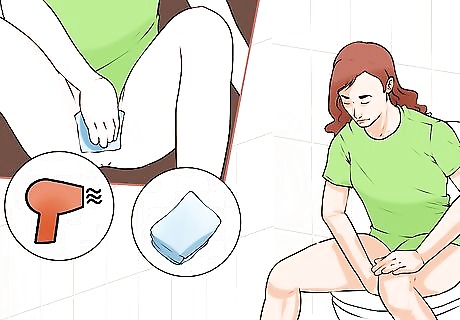
Keep the area clean and dry to encourage the stitches to heal. Because the wound is between your vagina and your anus, you will need to take extra care to keep the wound as clean and dry as possible. Always rinse the area with water after urinating and wipe your bottom from front to back after you have a bowel movement. Doing so will help keep the area clean and reduce the potential for infection from bacteria in the stool.
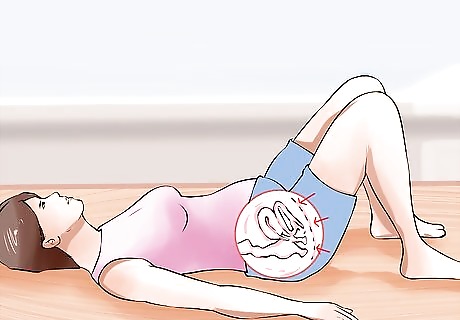
Start doing Kegel exercises. Start doing Kegel exercises as soon as possible after you give birth as long as your doctor says it is okay. Doing Kegel exercises will help to improve circulation and speed your healing time. It will also help your body to repair some of the tissue damage from giving birth. Kegel exercises strengthen the pelvic floor muscles that support the bladder, uterus, and rectum. In addition to helping your episiotomy wound to heal, these exercise can also help reduce urinary incontinence in women and strengthen contractions during orgasm. To perform Kegel exercises, start with an empty bladder and imagine trying to stop yourself from urinating and passing gas at the same time. You are trying to squeeze and lift the area. Be sure that you are squeezing and lifting without using any other muscles. Do not tighten your stomach muscles, squeeze your legs together, tighten your buttocks, or hold your breath. Only the pelvic floor muscles should be working.
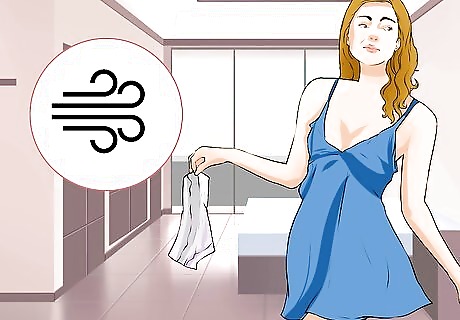
Expose the area to air. Since an episiotomy wound does not get much exposure to air during normal daily activities, it is important to expose your wound to air now and then. Exposing your wound to air for a few hours per day will help to reduce the moisture against the stitches. When you are napping during the day or at night, take off your underwear so that your wound will get some exposure to the air.
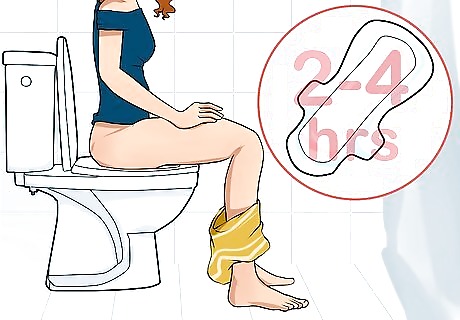
Change your pad every two to four hours. You will need to wear a pad while your episiotomy wound heals. Wearing a pad will help to keep the wound dry and also prevent any blood from getting on your underwear. Keeping the area clean and dry will help it to heal faster. Make sure that you change your pad ever two to four hours even if it looks clean.
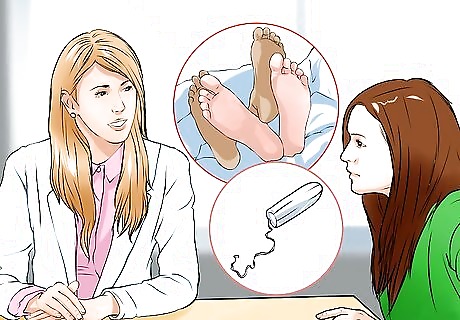
Talk with your doctor about sex and using tampons. Although your episiotomy wound should heal within 10 days, your internal structures have been stretched and may have minor tears in them. Most doctors recommend waiting six to seven weeks after giving birth before you start having sex again. Ask your doctor before you start resuming sexual activity to make sure that it will be safe for you to do so.
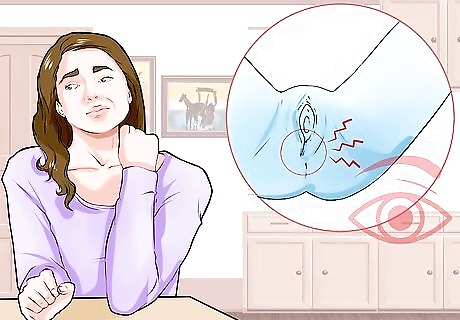
Monitor the area for potential infection. Infections to your episiotomy wound can slow the healing process and increase your pain. If you get an infection, you will require immediate medical attention to reduce the potential for serious consequences. For the first seven to 10 days after your episiotomy, do a visual inspection of the stitches and wound area every day. Call your doctor if you notice any of the following symptoms: Increasing pain The wound appears to break open You have discharge with a bad odor You have a hard or painful lump in the area The skin between your vagina and anus looks redder than usual The skin between your vagina and anus looks swollen You see pus coming from the stitches
Understanding and Preventing Episiotomy
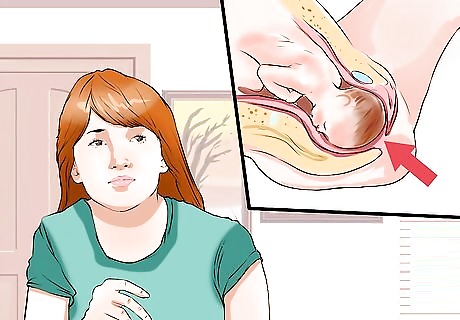
Understand the purpose of an episiotomy during childbirth. During a vaginal delivery the head of the baby must pass through the birth canal, through the vagina, and out of the body. During this process the head of the baby will usually press against the perineum until it stretches the tissues in this area enough for the head to pass through. Your doctor may perform an episiotomy if: Your baby is large and needs more room to exit your body Your baby’s shoulders get stuck during the delivery Your labor is so fast that the perineum doesn’t have time to stretch before the baby is ready to come out Your baby’s heart rate indicates that the baby is in trouble and needs to be delivered as fast as possible. Your baby is in an abnormal position

Learn about the different types of episiotomy. There are two types of incisions that your doctor can make. Both types require the same care after delivery and at home. The type of incision will depend upon your anatomy, how much room is needed, and the speed of the delivery. A midline or median incision is made from the end of the vagina back toward the anus. These are the easiest for the surgeon to repair after the baby’s birth, but they also have the highest risk of extending or tearing back to the anus during the birth. A mediolateral incision is done at an angle from the back of the vaginal opening and away from the anus. This offers the best protection against tearing to the anus but is more painful for the woman after delivery. This type of incision is also more difficult for the surgeon to repair after the birth of the child.

Talk to your doctor about your concerns. Let your doctor know that you want to allow enough time for the perineum to stretch on its own during birth. Ask for your doctor’s recommendations on how to reduce the need for an episiotomy. Make sure that your wishes are noted in the birth plan that the hospital staff will follow during the delivery. You will either develop this plan in your doctor’s office or during pre-admission. During labor use a warm compress against the perineum to help the tissue to more easily stretch during delivery. Ask your doctor if you can stand or squat to push. This places more pressure against the perineum, helping it to stretch. Push for five to seven seconds gently while breathing through it in the initial stages of pushing which slows the delivery of the baby and gives the head more time to place pressure on the perineum and allow it to stretch. Have your practitioner place gentle counter-pressure on the perineum during delivery so it doesn’t tear.
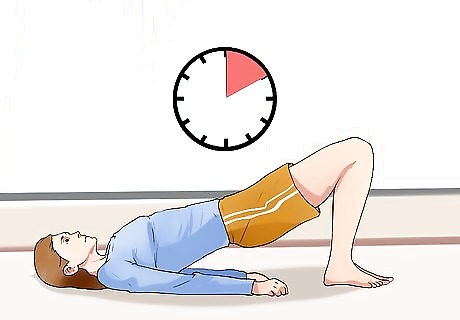
Do Kegel exercises to help reduce your need for an episiotomy. You can also reduce the risk of needing to have an episiotomy by doing Kegel exercises throughout your pregnancy. Kegel exercises strengthen your pelvic floor muscles and get your body ready to deliver your child. Set aside 5–10 minutes every day to perform Kegel exercises.

Give yourself a perineal massage. In the final six to eight weeks before birth, perform a perineal massage once a day. This will help reduce the potential for tearing or the need for an episiotomy during birth. You can perform a perineal massage alone or with your partner. Lie on your back with your head against some pillows and your knees bent. Massage a small amount of oil into the skin of the perineum. You can use a vegetable based oil or coconut oil to help soften the tissue and to help make it stretch. Place your fingers around two inches inside your vagina and press downward toward the anus. Move your finger in a u-shape, stretching the skin between the vagina and anus. You may feel a tingling or burning sensation. Hold this stretch for 30 to 60 seconds and then release. Do this stretch two to three times every time you do a perineal massage.















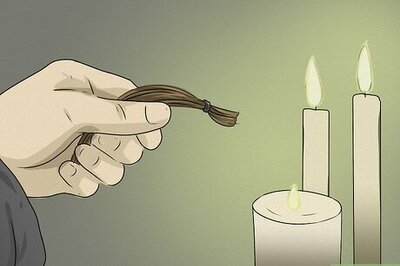
Comments
0 comment